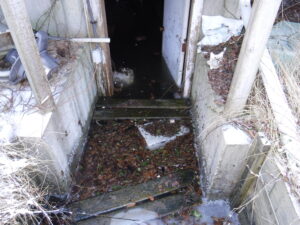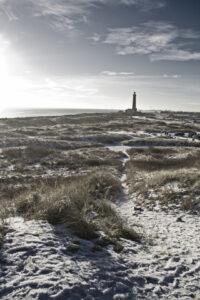We’ve seen many storms and some pretty nasty winters the last few years here on Cape Cod, but last week was certainly something different for the area. While locals braced themselves for a storm after sustaining a long cold snap they didn’t quite expect to be facing such a major flood situation.
Provincetown’s high tide just after noon measured a whole 4’ higher than the previous tide, hitting a total height of over 10’ and turning Commercial Street into a river. Not only did the tides raise, the groundwater level rose so places like dirt crawlspaces flooded and all of the melting snow didn’t drain completely into the ground. Some areas reported surges that exceeded those of the historic Blizzard of ’78!
Not only were areas of the Cape being devastated with storm surge and groundwater damage, the warmer temperatures thawed homes with frozen pipes causing water damage in other areas. We can’t stress enough the importance of winterizing your home if you’re going to be away for an extended period of time. Even if it’s just a short while, make sure someone checks in on it, that your water is off and that your heat is on. Open your cabinets under sinks to allow for the warm air to flow to the plumbing. If you’re away often, purchase a water detector for damage prone areas like the basement to alert you as soon as water is detected, and Wi-Fi enabled thermostats so you can monitor the temperature in the house. These things help you act fast when disaster strikes so you can minimize the amount of damage you sustain.
Complicating matters even further were the power outages. Most heating systems rely on electricity to work so when the storm knocked out power to areas it also knocked out the heat. Later that night temperatures dropped to a deep freeze. It was a recipe for disaster. Pipes were even freezing in homes that were primary to the residents and the heat was on. It was really that cold, and the wind was that strong that it froze pipes in their exterior walls and ceilings.
Although there are a lot of areas where homeowners are required to purchase flood insurance because of their location on FEMA’s flood maps those policies don’t cover damaged contents. Think of all of the things that people keep in their basements; seasonal clothes, pantry items, extra furniture, etc. Finished basements could be entire bedrooms, offices and TV rooms. Flood insurance at least covers damage to burners and electrical equipment, but the cost to not only replace but dispose of all of the contents can be in the thousands.
“25% of homes with flood claims each year are in low risk zones.”
It has been a real eye opener. As restoration efforts continue and our crews remain available round-the-clock for emergency services we hope that everyone really takes a look at the measures they have in place for such disasters to protect themselves, their business and their homes from future events. It’s obvious the weather patterns continue to change, and the storms seem to be getting stronger, so please, stay safe out there and make sure you prepare for all of the possibilities.

